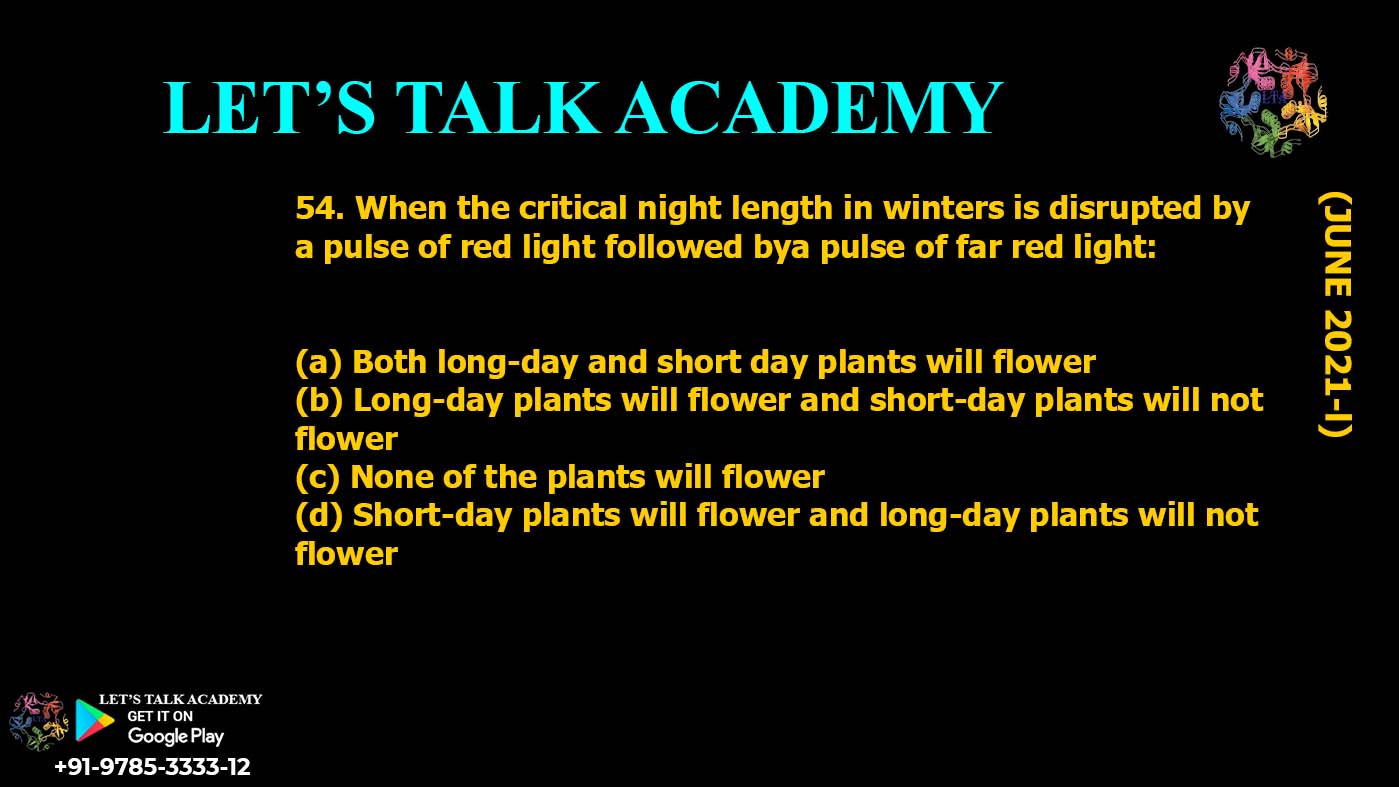54. When the critical night length in winters is disrupted by a pulse of red light followed bya pulse of
far red light:
(a) Both long-day and short day plants will flower
(b) Long-day plants will flower and short-day plants will not flower
(c) None of the plants will flower
(d) Short-day plants will flower and long-day plants will not flower
Introduction
Light plays a crucial role in regulating flowering in many plants. The response of plants to light—specifically to the length of the day and night—determines whether they will flower. Some plants require long periods of light to flower, while others need long periods of darkness. This phenomenon is controlled by a process called photoperiodism. In this article, we will explore the effect of red and far-red light pulses on the critical night length and how they influence the flowering of long-day and short-day plants.
Photoperiodism and Flowering
Photoperiodism refers to the plant’s ability to detect the length of the day and night. Plants can be broadly classified based on their photoperiodic responses:
-
Long-day plants: These plants flower when the night length is shorter than a critical threshold, typically during summer months when days are long.
-
Short-day plants: These plants flower when the night length exceeds a critical threshold, usually in the fall or winter when days are shorter.
-
Day-neutral plants: These plants do not rely on day length and flower based on other factors.
The critical period of night length is a key factor in determining flowering, especially in short-day plants, which require a long period of uninterrupted darkness.
Role of Red and Far-Red Light
The critical night length can be disrupted by light pulses, particularly red and far-red light, which are detected by the plant’s phytochrome system. Phytochromes are photoreceptors that help plants sense light and regulate processes such as flowering, seed germination, and elongation.
-
Red light (around 660 nm) triggers the conversion of phytochrome from its inactive form (Pr) to its active form (Pfr).
-
Far-red light (around 730 nm) reverses this conversion, turning the active form (Pfr) back into its inactive form (Pr).
When a red light pulse is followed by a far-red light pulse, it effectively cancels out the effect of the red light, as the phytochrome returns to its inactive form (Pr). This disrupts the plant’s perception of night length, leading to altered flowering responses.
Effects on Long-Day and Short-Day Plants
-
Long-day plants: These plants typically flower when the night is shorter than a critical threshold. A pulse of red light followed by far-red light will effectively mimic a situation where the night is shorter than it actually is, potentially leading the plant to flower, as it perceives the conditions as being more like a long day.
-
Short-day plants: These plants require a long uninterrupted period of darkness to flower. The pulse of red light followed by far-red light will disrupt the long night by shortening it. This disruption will prevent the short-day plants from flowering, as they will not receive the correct light signals for their critical night length.
Conclusion
Given the information above, the correct answer to the question is:
-
(b) Long-day plants will flower and short-day plants will not flower.
This is because the red and far-red light pulses effectively shorten the critical night length, triggering flowering in long-day plants but not in short-day plants, which require a longer night period.
Correct Answer: (b) Long-day plants will flower and short-day plants will not flower




2 Comments
Akshay mahawar
April 22, 2025Done 👍
yogesh sharma
May 7, 2025Done sir 👍✅